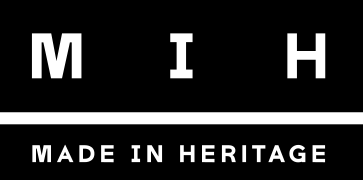Corporate Museums are exceptional tools for showcasing corporate culture, identity, research, and training.
HISTORICAL HERITAGE OF COMPANIES IN ITALY
What is a corporate museum?
A corporate museum is typically established by the company itself and utilizes the company's archive to document material artifacts (dating back to industrialization since 1860) and the significance of various contexts such as production, economy, technology, society, and culture. Italian corporate museums have specific characteristics such as:
- different modes of operation (craftsmanship and industry)
- territorial distribution (production districts)
- the interplay between design and entrepreneurial culture
The following are definitions of corporate museums according to existing literature:
"Corporate museums are distinct from commercial and advertising exhibitions. They are enduring institutions that grow and evolve. These museums arise from the need to preserve historical memory and current events."
L.V. Coleman, Company Museums, America Association of Museums, Washington DC 1943, p. 3
"...a corporate facility with tangible objects and/or exhibits displayed in a museum-like setting, which communicates the history, operations, and/or interests of a company to employees, guests, customers, and/or the public."
V.J. Danilov, Corporate Museums, Galleries and Visitor Centers. A Directory, Greenwood Press, New York Westport, London 1991, p. 2
"Institutions or structures that emanate from the economic activities of a company, district, or productive tradition, with significant ties to the territory, and exemplify corporate cultural policies."
Definition of corporate museums from the Museimpresa Association website, 2002
Why establish corporate museums?
The primary reasons for establishing corporate museums are to celebrate family/business legacies or commemorate special occasions, such as anniversaries. However, these museums also serve the company by facilitating communication, innovation, and training. They contribute to the development of new products and the transmission of design and production processes. In many cases, corporate museums serve as internal training venues for new employees or collaborate with schools and scientific research institutes
Additionally, corporate museums foster social and cultural responsibility, enhancing the company's identity and reputation.
They can also have commercial and tourist implications for both the company and the region. Prominent examples include the Ferrari museum, motor valley museums, fashion museums like Armani, Prada, and Ferragamo, as well as renowned Italian brands like Lavazza and Campari.
DEVELOPMENT OF ARCHIVES AND CORPORATE MUSEUMS
The development of corporate museums can be traced back to two periods: the 1970s, when major industrial archives were established, and the 1990s, with the emergence of Made in Italy companies. Concurrently, the media began to pay more attention to this phenomenon, and industrial-tourism routes and itineraries of industrial heritage sites and Italian design "emergencies" were created. In the early 2000s, heritage marketing gained prominence in Italy as an opportunity to convey unique stories and enhance brand competitiveness and reputation. Recently, there has been a focus on the social and cultural impact of corporate heritage on the region, as well as its educational and scientific research functions.
In summary, the types of corporate museums commonly encountered are as follows:
Corporate Museum and Corporate Archive:
These entities often coexist and share spaces, serving as centers of corporate culture for preserving, exhibiting, researching, and training. They are often themed and focused on the company's specific industry.
Business District Museum:
These museums pertain to production districts where multiple companies within a specific industry gather in close proximity. They aim to highlight the unique features of a particular production area.
Museum and Company:
These museums are distinct from the parent company, either due to the nature of their collections or their appeal to a wide range of visitors. They often operate as separate business units, generating revenue through ticket sales, events, and merchandise.
Celebratory Spaces and Architecture:
These spaces are usually dedicated structures created by the company for promotional events to showcase the brand's heritage. They can be adapted to host various social initiatives, such as internal and external training courses, thereby strengthening corporate and local identity and culture. They also contribute to corporate social responsibility efforts.
Prerequisite
Choice to rebuild one's corporate identity, as it is located in a specific territory and the result of a specific context (economic, productive, social, technological, cultural).
What they exhibit and what they tell
Specificity compared to traditional museums
- heterogeneity of the materials preserved (e.g. sketches, drawings, prototypes, objects, tools and machines for production, artifacts for communication, photographs, correspondence)
- need for a multidisciplinary reading (economic, sociological, sociotechnical, anthropological, aesthetic)
- they are configured as "museums of the present" when they are in direct relationship with the still active company (they concretely, and not only virtually, relate history and current events)
- they can perform a wider cultural and social function (starting from the territory of settlement)
Key Considerations:
Establishing a corporate museum involves various considerations:
- Material selection
- Historical interpretation of ongoing contemporary events
- Choosing exhibition content (projects, products, processes) based on appropriate museological models
- Integration of artistic
- technical-scientific
- new industrial product origins
- Effective storytelling, contextualization, and multiple interpretations
- Communication strategies (within and through the museum)
- Development of specialized personnel (archivists, curators, exhibition designers, graphic designers, interaction designers, restorers, etc.)
- Relationship building with the company's current activities
- Role of museums in corporate life, including training, cultural, and social function
The answers to these considerations shape a diverse national landscape comprising various types of corporate museums

